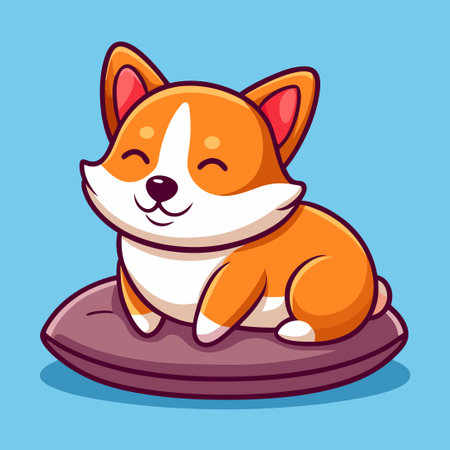Introduction to Playtime with Your Dog
If you’re looking for ways to keep your dog happy, healthy, and truly connected to you, playtime is where the magic happens. In the busy rhythm of everyday life, it’s easy to forget how much our furry friends need more than just food and walks—they crave attention, excitement, and a good challenge! Playing games with your dog isn’t just about burning off energy (though that’s a big plus)—it’s also about strengthening your bond and giving your pup a mental workout.
Dogs of all ages love to play, whether they’re chasing after a tennis ball in the backyard or showing off their best tricks in the living room. Every playful moment is a chance to communicate, encourage positive behaviors, and build trust. Plus, play is a fantastic way to sneak in some exercise—something every American dog needs to stay at a healthy weight and live their best life.
Why Is Play So Important?
| Benefit | How It Helps Your Dog |
|---|---|
| Bonding | Creates stronger trust and connection between you and your dog |
| Exercise | Keeps your dog fit, burns energy, and helps prevent obesity |
| Mental Stimulation | Prevents boredom by challenging your dogs brain and instincts |
| Behavior Training | Reinforces good habits and social skills through positive interaction |
Setting the Stage for Fun
No matter if you have a playful puppy or a wise old companion, making time for games can bring tons of joy into both your lives. Get ready to try out fun activities that make tails wag and hearts happy! Whether indoors or out, these games are designed to be simple, safe, and super engaging—for dogs and humans alike.
2. Classic Fetch and Its Fun Twists
Fetch is a timeless game that almost every dog owner in America has played at some point. It’s simple: you throw an object, your dog chases after it, grabs it, and brings it back. This classic game not only gives your pup a great workout but also helps reinforce important skills like recall and focus.
The Basics of Fetch
To get started with fetch, all you need is a ball or favorite toy and some open space. Here’s a quick overview:
| Step | Description |
|---|---|
| 1. Choose a Toy | Pick a durable ball or frisbee that your dog loves. |
| 2. Get Your Dog’s Attention | Show the toy to your pup and get them excited to play. |
| 3. Throw the Toy | Toss the toy across the yard or park. |
| 4. Encourage Retrieval | Call your dog back once they’ve grabbed the toy. |
| 5. Reward Return | Praise or treat your dog for bringing the toy back to you. |
Making Fetch More Interesting
If fetch is starting to feel routine, there are plenty of ways to spice things up:
- Add Obstacles: Set up cones or chairs to create a mini agility course for your dog to navigate on their way to the toy.
- Try Water Fetch: If you’re near a lake or have access to a dog-friendly pool, toss floating toys for water-loving pups.
- Use Scented Toys: Hide toys with treats inside or use ones with unique scents to engage your dog’s nose as well as their legs.
- Vary Distances: Change how far you throw the toy to keep your dog guessing and moving in different directions.
- Play Fetch with Friends: Invite other dogs and owners for a group fetch session—it’s great socialization!
Favorite American Places for Fetch
The U.S. is packed with fantastic places to play fetch, whether in your own backyard or out in nature. Here are some popular spots:
| Location Type | Description | Example Places |
|---|---|---|
| Backyard | Your personal space, always available for short sessions. | Any suburban home in Texas, California, or Florida. |
| Dog Parks | Sociable spaces where off-leash play is welcome. | Crescent Park (New Orleans), Bark Park (Nashville) |
| Parks & Trails | Larger open areas, sometimes with lakes or trails for extra adventure. | Cherokee Park (Louisville), Central Park (NYC) |
| Lakes & Beaches | Perfect for water fetch if your dog likes swimming. | Cannon Beach (Oregon), Lake Tahoe (California/Nevada) |
Pro Tips for Safe Play
- Always use safe, non-toxic toys sized appropriately for your dog.
- Avoid playing fetch on hard surfaces that could hurt paws or joints—grass is best!
- If you’re at a public park, make sure it’s off-leash friendly and follow local rules.
- Always use safe, non-toxic toys sized appropriately for your dog.
- Avoid playing fetch on hard surfaces that could hurt paws or joints—grass is best!
- If you’re at a public park, make sure it’s off-leash friendly and follow local rules.
This classic game can be as simple or creative as you want—just remember to have fun and let your dog set the pace!

3. Tug-of-War: Strengthening Your Bond
Tug-of-war is a classic game that many dogs love, and it’s more than just a way to burn energy—it’s also a fantastic way to connect with your pup. When played safely, this game can help build trust, teach self-control, and boost confidence for both you and your dog.
How to Play Tug-of-War Safely
- Set Rules: Make sure your dog knows basic commands like “drop it” or “leave it” before you start. This keeps the game fun and under control.
- Let Your Dog Win Sometimes: Allowing your dog to win makes the game rewarding and can actually increase their confidence.
- No Teeth on Skin: If your dog’s teeth touch your hand, pause the game immediately. This helps them understand boundaries.
- Monitor Excitement: If things get too rowdy, take a short break. Calmly redirect attention so everyone stays safe.
Choosing the Right Tug Toy
Picking a safe and durable toy is essential for a great tug-of-war experience. Here’s a quick comparison to help you choose:
| Toy Type | Pros | Cons |
|---|---|---|
| Rope Toys | Good grip, helps clean teeth, widely available | Can fray over time; supervise to avoid swallowing strands |
| Rubber Tug Toys | Durable, easy to clean, gentle on teeth | Some are heavy; not all dogs like rubber texture |
| Tug Rings/Double-Handled Toys | Great for interactive play, easy for both to hold | Can be bulky for small dogs |
The Benefits for Dogs and Owners
- Mental Stimulation: Tug-of-war isn’t just physical—it challenges your dog’s mind as they focus on following rules and signals.
- Physical Exercise: Both you and your pup get a workout, helping release pent-up energy in a healthy way.
- Bonds & Trust: Sharing playtime creates positive associations and strengthens your relationship.
- Teaches Self-Control: Practicing commands during play teaches patience and impulse control.
Tug-of-war is more than just a simple game—it’s an opportunity to have fun together while reinforcing good habits and building lasting trust with your furry friend.
4. Hide and Seek: Boosting Your Dog’s Senses
If you’re looking for a game that’s both fun and mentally stimulating for your dog, hide and seek is a classic choice. This game works indoors or outdoors, and it’s a fantastic way to encourage your dog’s natural scent-tracking abilities while also giving them a chance to problem-solve.
How to Play Hide and Seek with Your Dog
Getting started is easy! Here’s a simple step-by-step guide:
| Step | What To Do |
|---|---|
| 1. Start Simple | Ask your dog to “stay” or have someone gently hold them while you go hide in an easy spot (like behind a door or couch). |
| 2. Call Their Name | Once you’re hidden, call your dog’s name excitedly to encourage them to come find you. |
| 3. Reward and Praise | When your dog finds you, give lots of praise or a treat. Make it a big deal so they know they did a great job! |
| 4. Make It Challenging | As your dog gets better, choose trickier hiding spots or even hide treats instead of yourself for extra nose work. |
Tips for Success
- Indoors: Use rooms with doors, closets, or behind furniture for creative hiding spots.
- Outdoors: Try hiding behind trees, bushes, or even garden furniture. Always make sure the area is safe and secure.
- Scent Tracking: If your dog struggles at first, leave a trail of treats leading toward you or lightly rub your hands on objects along the way.
- Keep Sessions Short: Dogs love quick games! A few rounds are usually enough before they need a break.
The Benefits of Hide and Seek
- Mental Stimulation: This game challenges their brain and keeps them sharp.
- Scent Work Practice: It taps into their powerful sense of smell, which most dogs love to use.
- Bonds with You: Your dog gets one-on-one time with their favorite human—win-win!
5. Agility and Obstacle Courses at Home
Ready to turn your living room or backyard into a fun-filled playground for your dog? With a little American DIY spirit, you can create an engaging mini obstacle course using everyday household items. Not only is this a great way to keep your pup physically active, but it also challenges their mind and strengthens the bond between you both. Here’s how you can get started:
Easy DIY Obstacle Ideas
| Household Item | Obstacle Idea | How to Use |
|---|---|---|
| Broomstick or Mop Handle | Jump Bar | Balance two chairs and lay the stick across for your dog to jump over. |
| Laundry Basket | Tunnel or Weaving Post | Turn the basket on its side for a crawl-through tunnel, or line up several for weaving. |
| Pillows or Couch Cushions | Paw Pads/Balance Step | Create uneven ground that your dog can step or leap onto, improving coordination. |
| Hula Hoop | Jump-Through Ring | Hold the hoop upright and encourage your dog to jump through it for a fun challenge. |
| Cardboard Boxes | Crawl Tunnel or Maze Walls | Cut out both ends for tunnels or arrange as walls for a maze-like effect. |
Setting Up Your Course
- Pick a safe space with enough room for your dog to move freely—indoors or outside works great!
- Arrange 3–5 obstacles in a line or circle. Mix up the order each time to keep things interesting.
- Use treats and lots of encouragement as your dog learns each obstacle. Go slow at first and celebrate every try!
Tips for Success
- Keep obstacles low and wide at first, especially if your dog is new to agility games.
- If you’re using slippery floors indoors, put down rugs or mats so paws don’t slide.
- Always supervise playtime—safety comes first!
The Joy of DIY Playtime
Your homemade obstacle course isn’t just about exercise—it’s about having fun and learning together. Switch up the items, add new challenges, and invite family members to join in. With some creativity and teamwork, you’ll have your dog racing through the course like a champ in no time!
6. Brain Games for the Clever Pup
Keeping your dog’s mind sharp is just as important as physical exercise. Brain games can help prevent boredom, reduce anxiety, and strengthen your bond with your furry friend. Here are some fun ways to challenge your pup’s brain at home:
Puzzle Toys
Puzzle toys come in all shapes and sizes and are a great way to encourage problem-solving. You can find options that require your dog to slide, lift, or spin pieces to reach hidden treats. These toys not only keep your dog busy but also help build their confidence as they figure things out.
Popular Puzzle Toy Ideas
| Toy Type | How It Works | Why Dogs Love It |
|---|---|---|
| Snuffle Mat | Hide kibble in fabric folds for sniffing fun | Satisfies natural foraging instincts |
| Treat Ball | Roll the ball to release treats inside | Makes snack time active and exciting |
| Interactive Puzzle Board | Move sliders or open compartments for rewards | Keeps curious pups engaged longer |
Treat-Dispensing Games
If your dog loves snacks (and let’s be real, most do), treat-dispensing games are a win-win. Fill a Kong or similar toy with peanut butter or treats, and watch as your pup works to get every last bit out. You can also try freezing the treats inside during hot weather for an extra challenge and a cool-down.
Teaching New Tricks
Learning new tricks is more than just cute—it gives your dog a mental workout. Try teaching classics like “roll over,” “spin,” or even more advanced skills like putting toys away in a basket. Remember to keep sessions short and positive, using plenty of praise and treats along the way.
Simple Tricks to Start With
- Shake Hands: Great for greetings and building confidence.
- High Five: Fun and easy for most dogs to pick up.
- Find It: Hide a treat under a cup and let your pup sniff it out.
- Touch: Teach your dog to touch their nose to your hand on command—a useful foundation for other tricks!
Brain games aren’t just about keeping your dog busy—they’re about having fun together while giving their mind something new to chew on!
7. Tips for a Safe and Positive Play Experience
Playing games with your dog is all about having fun together, but it’s also important to make sure that everyone stays safe and happy. Here are some practical tips to help you get the most out of your playtime:
Keep Playtime Safe
- Choose the Right Toys: Always pick toys that are the right size for your dog—nothing too small that could be swallowed or too big to hold comfortably.
- Safe Spaces Matter: Play in fenced yards, dog parks, or inside your home where there’s no traffic or dangerous objects around.
- Supervise Play: Always keep an eye on your dog during games, especially when introducing new toys or activities.
- Stay Hydrated: Bring water and take breaks, especially on hot days or after lots of running around.
How to Tell If Your Dog Is Having Fun
| Signs Your Dog Is Enjoying Playtime | What To Watch Out For |
|---|---|
| Wagging tail and relaxed body language | Cowering, hiding, or trying to escape |
| Bouncy movements and happy barks | Growling, snapping, or showing teeth |
| Eagerly bringing toys back to you | Panting heavily or drooling excessively (outside of normal exertion) |
| Play bowing (front legs down, rear up) | Limping or favoring a paw |
Ending on a Positive Note
- Cool Down Together: Slow things down before finishing up—try gentle petting or a short walk to help your dog relax.
- Praise and Treats: Give lots of verbal praise and a treat to reinforce good behavior and end playtime with positive vibes.
- Tidy Up: Put away toys after play so they stay safe and exciting for next time.
A little attention to safety and your dogs mood makes every game more rewarding—for both of you!

